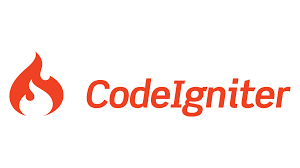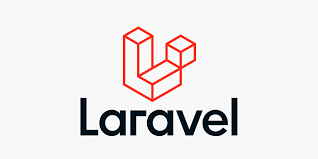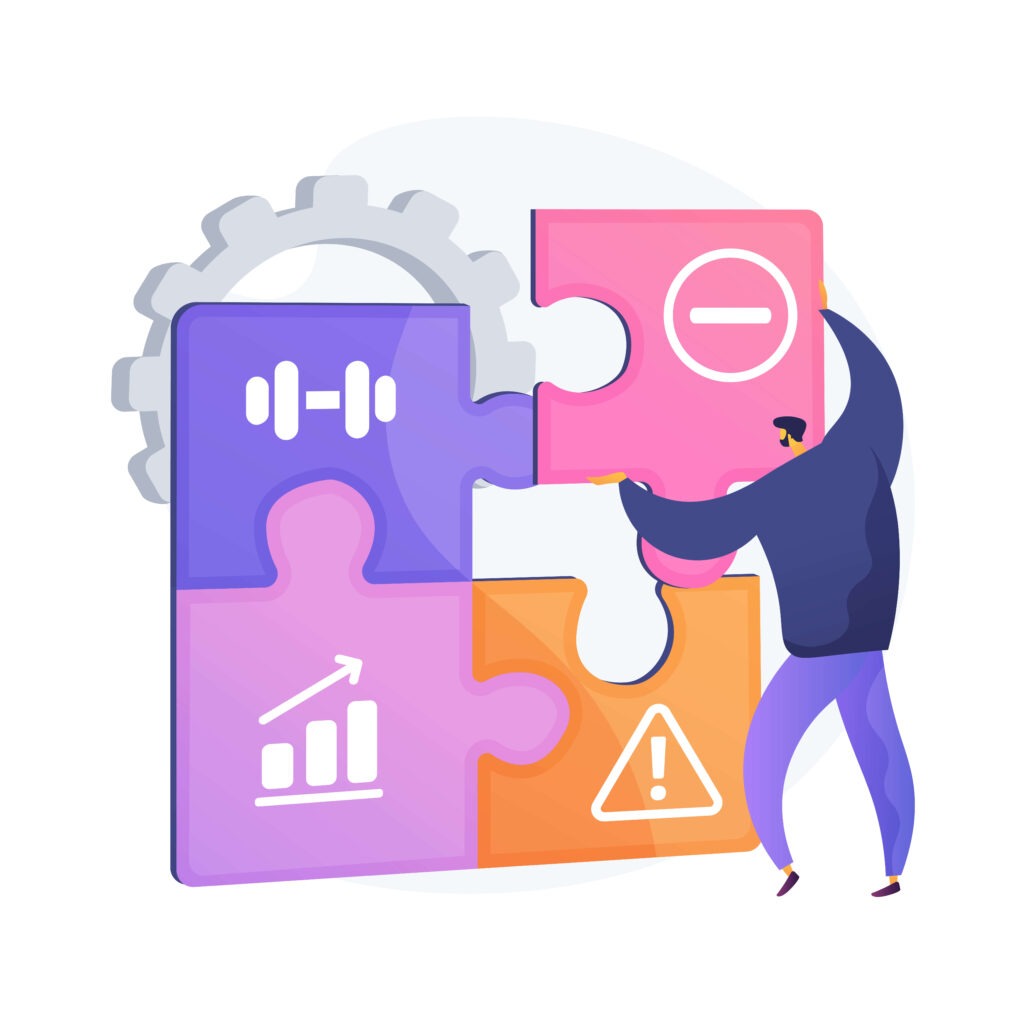Are you torn between Laravel and CodeIgniter, trying to figure out which PHP framework aligns best with your development needs? As the age-old debate between these two PHP powerhouses continues, it’s time to get the clarity you need. Are you better suited for Laravel’s elegant syntax and modern features, or does CodeIgniter’s lightweight simplicity resonate with your project requirements?
With an extensive background in PHP development, we at Mallow have honed our expertise over years of working exclusively with Laravel. But this specialisation in Laravel has not deterred our commitment to impartiality and focusing on the best solutions for clients. Our dedication to providing unbiased, client-oriented guidance is one of the reasons clients seek out our perspective in the ever-evolving realm of PHP frameworks.
After going through this article, you will gain valuable insights into the crucial factors that influence the selection of a PHP framework for your projects. The article will provide a detailed comparison of Laravel and CodeIgniter, highlighting their respective strengths, weaknesses, and best-use scenarios. By the end of the article, you will have a clear understanding of the performance, scalability, and flexibility aspects of these two popular frameworks. You will be equipped to make an informed decision based on your project’s specific requirements, as the article will delve into real-world use cases, providing practical recommendations and tips for choosing the most suitable framework to achieve your development goals.
An Overview of CodeIgniter

CodeIgniter is an open-source, lightweight PHP framework designed for web developers to simplify building dynamic web applications. It follows the Model-View-Controller (MVC) architectural pattern, offering a structured and organised approach to development. CodeIgniter is known for its simplicity and small footprint, making it an excellent choice for those who want to create web applications quickly and efficiently. It includes a range of in-built libraries that assist in common web development tasks, such as form validation, database interaction, and session management.
One of CodeIgniter’s key strengths is its excellent documentation and supportive community, making it easy for developers to get started and find solutions to their problems. It also provides strong security features, such as XSS filtering and CSRF protection against common security vulnerabilities.
CodeIgniter’s Essential Feature Set

- Rapid Development – CodeIgniter allows for faster development of web applications, helping businesses get their products or services to market more quickly, reducing time-to-market.
- Security – CodeIgniter has built-in security features, such as data encryption, XSS filtering, CSRF, and protection against common security vulnerabilities. This minimises the risk of data breaches and other security issues.
- Form and data validation – CodeIgniter comes with a built-in form validation library that simplifies the process of validating user input from forms. This library allows you to set rules for form fields, define custom validation functions, and easily check if the submitted data meets your criteria.
- Maintenance and Upgrades – It’s relatively straightforward to maintain and upgrade CodeIgniter applications, ensuring that they remain up-to-date and secure. The reliability of CodeIgniter’s release schedule aids developers in aligning their applications with current web development standards and security best practices, ensuring consistent updates and maintenance.
An Overview of Laravel

Laravel is a powerful and popular open-source PHP web application framework that is widely recognised for its elegant syntax and developer-friendly features. It follows the Model-View-Controller (MVC) architectural pattern and offers a wide array of tools and libraries for simplifying web application development.
Laravel’s intuitive syntax makes tasks like routing, database querying, and authentication more straightforward, enhancing developer productivity. It also includes features like Eloquent ORM, a robust set of built-in security mechanisms, and a Blade templating engine, which contribute to the framework’s efficiency and security. Laravel has a dedicated team and active community, ensuring regular updates, security patches, bug fixes, comprehensive documentation, and a rich ecosystem of packages, making it an excellent choice for building modern, scalable, and secure web applications.
An in-depth look at Laravel’s feature set
- Eloquent ORM (Object-Relational Mapping) – Laravel’s Eloquent ORM simplifies database interactions. It allows developers to work with databases using an elegant and expressive syntax that mirrors object-oriented programming.
- Blade Templating Engine – Laravel’s Blade templating engine is a lightweight yet powerful tool for creating dynamic views. Its intuitive syntax makes it easy to write clean and maintainable templates.
- Artisan Console – Artisan is Laravel’s command-line tool that automates common development tasks. With Artisan, developers can generate boilerplate code, manage database migrations, and perform various other tasks, and improve the overall productivity of the development process.
- Task Scheduling and Job Processing – Laravel’s task scheduling and job processing mechanisms are indispensable for managing background tasks and automating recurring jobs.
- Dependency Injection and Service Container – Laravel leverages a robust service container for managing class dependencies. This feature promotes the use of dependency injection and inversion of control, making code more modular, testable, and maintainable.
- Community and Documentation – Laravel boasts an active and vibrant community of developers. Extensive documentation, tutorials, forums, and packages are readily available, making it easy to find solutions to challenges and learn the best practices. With 75k stars and 24k forks in Github, and 208,778 questions in stack overflow, Laravel continues to be one of the most popular frameworks of PHP. (data as of 24th Oct 2023)
What are the pros and cons of CodeIgniter?

The strengths of the CodeIgniter framework
CodeIgniter offers several strengths that can be highly beneficial for web application development. Here are the details about some of the key strengths:
- Ease of Use
CodeIgniter is renowned for its user-friendly and straightforward approach. It has a small learning curve, making it accessible to both novice and experienced developers. This simplicity accelerates project development, reducing the time and effort required for coding. The framework’s well-organised structure and clear documentation empower developers to quickly grasp its concepts and start building applications with ease.
- Flexible and customisable
CodeIgniter offers a high degree of flexibility, allowing developers to create applications that align precisely with their business requirements. With minimal configuration, developers can mould the framework to their unique needs, adding or removing components as necessary. This customizability makes CodeIgniter an excellent choice for businesses seeking tailored solutions.
- Comes with built-in security features
CodeIgniter prioritises security and includes numerous built-in features for safeguarding applications. It offers protection against common security threats like cross-site scripting (XSS), CSRF and SQL injection. Business application owners can rest assured that their data and user information are well-protected, enhancing trust and compliance.
- Well-established community
The CodeIgniter framework possesses an established community of developers. This community provides valuable resources, including documentation, forums, and some basic set of libraries. For business owners, this means a robust support network is available for addressing issues, sharing knowledge, and staying updated on the latest developments in the framework.
Challenges and limitations of the CodeIgniter framework

1.
Does not emphasise code maintainability
CodeIgniter, while known for its simplicity, does not enforce strong code organisation or naming conventions. This can lead to codebases that become harder to maintain as they grow larger and more complex. Without strict guidelines, developers might adopt inconsistent coding practices, potentially increasing the long-term cost of developing and maintaining your application.
2.
Limited libraries
While CodeIgniter offers a basic set of libraries, it does not have an extensive set of packages and components as compared to other PHP frameworks like Laravel, Symfony, etc. Developers may need to go with custom code for implementing advanced features, leading to increased development time, and exclusion of unforeseen or corner scenarios.
3.
Ideal only for small-scale applications
While CodeIgniter is indeed well-suited for small-scale applications due to its lightweight nature, this can be a limitation when it comes to developing more complex and resource-intensive projects. Therefore, it may not be the best choice for large enterprise-level applications or applications that require extensive scalability and a wide range of built-in features.
4.
Doesn’t support ORM
CodeIgniter doesn’t provide a built-in Object-Relational Mapping (ORM) system, which can make it less convenient for developers who prefer to work with databases in an object-oriented way. This may lead to more manual database interactions and potentially increase the complexity of database-related tasks.
What are the pros and cons of Laravel?

The strengths of the Laravel framework
- Flexibility
Laravel is a highly flexible framework that allows developers to create a wide range of web applications, from small projects to large-scale enterprise solutions. Its flexibility enables you to adapt to specific project requirements and make customisations as needed.
- Built-in Authentication and Authorisation System
Laravel provides a robust and customisable authentication and authorisation system out of the box. This system simplifies the process of user registration, login, and permission management, saving developers time and effort in implementing these critical security features. - Efficient Unit testing
Laravel encourages and facilitates automated testing through PHPUnit and Pest. This is essential for maintaining application reliability and stability and reducing the likelihood of introducing new bugs during updates or feature additions.
- Object-Relational Mapping (ORM)
One of Laravel’s standout features is its built-in Object-Relational Mapping (ORM) system, known as Eloquent. This ORM simplifies database interactions and allows developers to work with databases using intuitive, object-oriented syntax. With Eloquent, you can define database models as classes, making it effortless to query, insert, update, and delete records. This not only speeds up the development process but also ensures a more organised and maintainable codebase. Laravel’s ORM significantly reduces the need to write complex SQL queries, making database operations more accessible and efficient for developers.
- Blade templating
Laravel’s Blade templating engine is another remarkable feature that simplifies the process of creating dynamic, data-driven views in your applications. Blade provides an elegant and user-friendly syntax for defining templates and layouts, making it easy to embed data from your application into the views. With Blade, you can create reusable components, include sub-views, and implement control structures like loops and conditionals within your HTML templates. It not only enhances the readability of your code but also promotes a clear separation between the application’s logic and presentation, facilitating collaboration among developers and designers in your team.
- Queues and jobs
One of the significant advantages of the Laravel framework is its robust support for queues and jobs. Queues allow developers to handle time-consuming and resource-intensive tasks in a more efficient and scalable manner. By offloading tasks to a queue, applications can continue running smoothly while the queued jobs are processed in the background. Laravel’s queue system integrates seamlessly with various queue services like Redis, Amazon SQS, and others, making it versatile and adaptable to different project requirements. This feature is invaluable for scenarios such as processing email notifications, generating reports, or executing tasks that require asynchronous processing.
- Smart Scheduling for Your Tasks
Laravel’s task scheduler streamlines the process of automating recurring tasks, making it effortless to schedule routine activities like data backups, email delivery, report generation, and more. This feature not only enhances efficiency but also minimises the time required to execute these tasks manually within your application.
Challenges and limitations of Laravel framework

- Configurability complexity – Customising Laravel can lead to complexity in managing large and intricate applications.
- Frequent updates – Laravel’s annual major version releases, while indicative of its active development, can pose challenges for large-scale applications. Updating these applications to newer versions may require substantial effort and thorough testing to maintain compatibility, potentially causing disruption or delays in ongoing development projects. By the way this complexity could also be handled by Laravel Shift, which is a game-changer when it comes to application upgrades. It automates the migration process, ensuring your application stays up-to-date with the latest Laravel version. This cost-efficient solution not only saves you time but also reduces the chances of compatibility issues, making the upgrade process smoother and worry-free. Check out this article on how you can upgrade your Laravel application to the latest version for detailed insights.
Comparing Laravel and CodeIgniter head-to-head
In this head-to-head comparison, we will compare the essential aspects of these frameworks to help you make an informed decision.
From development speed and community support to performance and flexibility, we’ll explore how Laravel and CodeIgniter measure up in various key categories.
By the end of this comparison, you’ll have a clearer understanding of which framework aligns best with your specific project requirements.
| Criteria | Laravel | CodeIgniter | Winner | Reason |
| 1. Time to Market | Laravel offers a quicker development process with powerful built-in tools like Eloquent, Blade templating, and more. | CodeIgniter provides a streamlined environment but with fewer built-in tools. | Laravel | Laravel’s extensive built-in features expedite development. |
| 2. Actively in Development | Laravel has a larger and more active community with frequent updates and improvements. | CodeIgniter is still maintained but has a smaller community. | Laravel | Active development ensures up-to-date features and security. |
| 3. Availability of Developers | Laravel boasts a larger developer community, making it easier to find skilled developers. | CodeIgniter has a smaller community, which may limit developer availability. | Laravel | A larger pool of developers enhances the chance of getting expertise to work on your project easily |
| 4. Built-in Features | Laravel provides a rich set of built-in features, including authentication, routing, and ORM. | CodeIgniter offers a more lightweight core, requiring additional libraries for many features. | Laravel | Laravel’s comprehensive features reduce the need for third-party libraries. |
| 5. Flexibility | Laravel, while powerful, can be seen as less flexible due to its opinionated design. | CodeIgniter offers greater flexibility but at the cost of built-in features. | Tie | Both Laravel and CodeIgniter’s flexibility caters to diverse project requirements. |
| 6. Performance | Laravel’s performance is excellent, thanks to its powerful caching and optimisation tools. | CodeIgniter is known for its exceptional speed and low overhead. | Tie | Performance depends on specific project requirements and optimisation. |
| 7. Built-in Security Features | Laravel incorporates robust security features, including CSRF protection and authentication. | CodeIgniter offers some security features but may require more customisation. | Laravel | Laravel’s comprehensive security features enhance application safety. |
| 8. API Support | Laravel provides built-in support for building APIs with features like Passport. | CodeIgniter supports API development but may require additional libraries. | Laravel | Laravel streamlines API development with its integrated tools. |
| 9. Lightweight | Compared with CodeIgniter Laravel is not much lightweight due to the reason that Laravel possess an array of in-built libraries | Has a streamlined framework that prioritises simplicity and flexibility | CodeIgniter | Has a minimalist approach allows for efficient and tailored web application development. |
Please note that, though, Laravel emerges as the winner in several categories, including Time to Market, Actively in Development, Availability of Developers, Built-in Features, and Built-in Security Features. The choice between Laravel and CodeIgniter should depend on the specific project requirements and the importance of each criterion.
How to build a new application using Laravel framework: A step-by-step guide
At this point, you have a well-defined understanding of the situations that warrant choosing either framework. Each of these frameworks offers a unique set of features, and it’s essential to consider various criteria when determining which one is the ideal choice.
You can harness the benefits of Laravel’s rich feature set, active community, and robust security for projects where rapid development and scalability are paramount.
On the other hand, for scenarios requiring lightweight and highly flexible frameworks, CodeIgniter’s simplicity and predictable release schedule can be a valuable asset.
In essence, this knowledge empowers you to choose the ideal framework tailored to your specific project needs, ensuring efficient development, maintenance, and long-term success. If going with Laravel is what you have chosen for your application, then please check out this article on how to build a new application using Laravel for more details.
Still, not sure about your next step? Feel free to reach out to our team.
Your queries, our answers
Yes, we can continue developing your existing Laravel application. Please provide the current project details so we can assess and proceed. For more details, get in touch with our team.
No, we focus on custom Laravel solutions tailored specifically to your needs. We do not offer pre-built, off-the-shelf products.
Yes, we develop Laravel applications for various domains, including e-commerce, healthcare, finance, and more.
The cost varies based on the project's complexity and scope. For a basic MVP, costs generally range from $20,000 to $40,000 for web apps and $10,000 to $25,000 for mobile apps. For more advanced applications, costs can be higher. We offer a detailed cost breakdown tailored to your specific needs. To know more, check out our article on How much does it cost to work on a Laravel project with Mallow? and discover how we can build a strong partnership together.
The timeline depends on the project's complexity. A basic project may take a few weeks, while more complex applications could take several months.
Yes, we can align our working hours with your time zone to facilitate effective communication throughout the development process. For more details on how you can handle timezone differences efficiently, do check out our article on how to handle timezone differences while working with an offshore development team.
Mallow offers the following outsourcing models: Project-based outsourcing, Staff augmentation, & Dedicated development team (DDT)
Yes, we offer maintenance and support services to ensure your Laravel application remains up-to-date and functional.
Yes, you will own the intellectual property rights of your Laravel application upon project completion. Check out our article on why owning intellectual property rights while outsourcing your application is important.
The cost is influenced by several factors including the complexity of the project, the number of features required, and whether the application is for web or mobile. We provide a personalized estimate based on your project details.
We work with the latest stable versions of Laravel and can also support older versions if needed based on your project requirements. For more details check out our article on Laravel upgrade: when and how to transition to the latest version
Yes, we offer post-deployment support to address any issues and provide updates as needed.
To hire a Laravel developer from Mallow, you can contact us with your project requirements. We'll discuss your needs, suggest suitable developers or teams, and provide you with a proposal. Once the terms are agreed upon, we can start the development process.
Yes, you can hire a dedicated Laravel developer or a team of developers from Mallow. This allows you to have a dedicated resource working exclusively on your project, providing more control and flexibility over the development process.
To hire the right laravel developer for your project, check out this article on tips to hire the right Laravel developer.
Author
Anandhan
Anandhan is a passionate technical lead at Mallow, where he plays a crucial role in driving innovation and overseeing the development of cutting-edge solutions. With a wealth of experience in the field of technology, he consistently strives to elevate his team's performance and deliver exceptional results. His multifaceted interests inspire him to approach challenges with creativity and an open mind, leading to innovative solutions that transcend conventional boundaries. Beyond his professional endeavours, Anandhan nurtures a love for literature and cinema. During his free time, you'll often find him engrossed in the pages of books across various genres, exploring diverse narratives and gaining insights from authors around the world.



